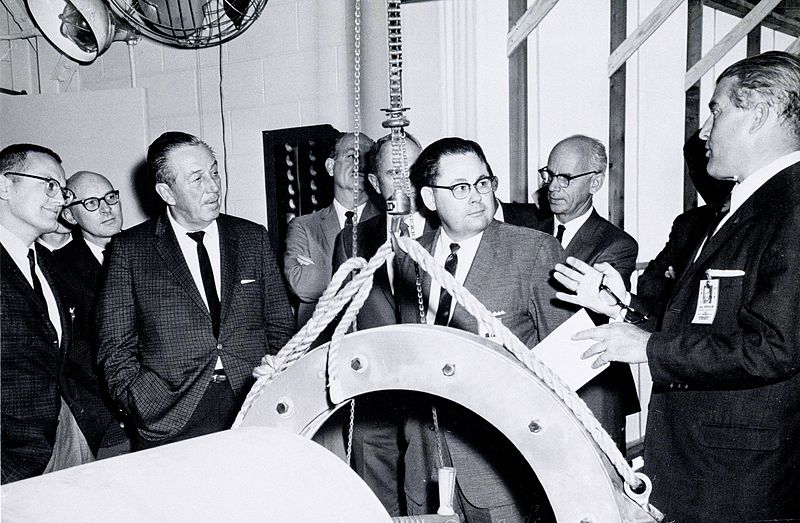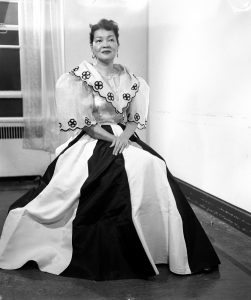Families throughout the United States faced hard times during the late-1930s. People were still recovering from the effects of the Great Depression, unfulfilled promises from President Roosevelt’s New Deal, and unemployment.1 During these financially troubled times, two dreamers, brothers Roy and Walt Disney, were on a mission to continue to produce quality animation on a fixed budget. After Fantasia‘s disappointing initial grossing, Disney Animation Studios’ debt was edging toward $3 million, which led to Walt Disney cutting all of his animators’ salaries. Although Roy Disney believed that this would undermine everything the two had built, he realized the only alternative was to sell their films through a franchise or file for bankruptcy, and so he agreed to the arrangement, unaware of the wrath that would follow.2

Tensions rose as animators also noticed a change in Walt Disney’s attitude toward them. The once cheerful man who was full of magic soon lost that touch, becoming distant to the people around him. Walt began to take all the credit for the animations that were being produced, and his employees soon realized that their pay was much lower than Disney’s salary. His ‘in-betweeners’ and clean up men were making $20 at the most, while his animators, ranging from amateurs to professionals, made between $75 and $300 weekly. Walt brought home a salary five times what his highest paid animators were bringing home.3
These pay disparities led his beloved animators to walk out on the company. On May 28, 1941, employees were greeted by hundreds of their coworkers waving signs preventing them from entering the studio. Although the exact number of employees who went on strike differs between sources, it is estimated that roughly one-third of the 1200 employees went out that morning. For the first few days of the strike, employees exchanged jokes and banter. The animators held up picket signs with clever illustrations that depicted their true emotions. One that struck deep to the studio was a picture of Walt Disney’s face in a cartoon style with crossed eyes and the caption “I can’t see why they’re unhappy.”4 Walt refused to give in to the demands of his employees, because he did not feel that they needed the increase in pay. This firm stance left the strike to go on for five whole weeks, tearing apart the company’s unity. This tension led Walt to leave for South America to take some time away from work, while he let go almost half of his team. After a bank representative for the company stepped in to review the case, the studio was sustained in favor of the animators leading to the dispute being settled. Though a treacherous three and a half months had passed, work finally resumed at the studio in Burbank, California with 694 employees on September 16, 1941.5

Just as everything seemed to be falling into place, the unimaginable happened. On December 7, 1941, the Japanese Navy Air service struck down on the United States naval base in Pearl Harbor sending the United States into World War II. Panic set in for the animators again as the cost of the films being produced during this time put a damper on the company’s overall budget.6 During this time, Walt and his company were sought out to produce cartoons for the armed services as morale builders. They also used half of the animation studio to house antiaircraft troops that were fighting during World War II. Although the company seemed to be taking on too much, this engagement would inspire Walt to create a few propaganda short films and war posters of his own that would speak to the people of the United States. Of all of the animation produced during the war, the most notable piece was Der Fuehrer’s Face, an animated short film in which Donald Duck dreams he is working in a German factory, all while ridiculing Adolf Hitler. The combination of housing troops in the studio, producing short films that expressed the idea of America’s freedom, and the efforts to inspire those fighting for the United States broaden the brand as a whole, showing every single American know what the Disney company stood for at the time.7
Though Walt himself did not find very creative success regarding his work toward the government propaganda animation and posters, it paid off very well for the company, raising its reputation and generating profits. The animation studio’s contributions to America during the World War II brought smiles with their comedic satire to families struggling to find hope as their loved were out serving their country. Soon after, they produced notable works such as Bambi (1942), Song of the South (1946), and Cinderella (1950), with Cinderella generating enough gross profit to pull the company out of debt and further establish their brand. Had both the strike and Walt lending a hand during the war not happened to the Walt Disney Animation Studios, Walt and Roy Disney may not have been able to sufficiently pay their ‘on the edge of leaving the company’ employers and the bills that came with owning the animation studio. The studio itself could have shut down permanently, never transforming from two passionate brothers’ project to a multi-billion dollar brand that brings magic fans and families all across the globe.
- The Hutchinson Unabridged Encyclopedia with Atlas and Weather Guide, 2018, s.v. “The USA in the 1930s.” ↵
- Neal Gabler, Walt Disney: The Triumph of the American Imagination (New York: Knopf, 2006), 350-351. ↵
- Neal Gabler, Walt Disney: The Triumph of the American Imagination (New York: Knopf, 2006), 355. ↵
- Steven Watts, The Magic Kingdom: Walt Disney and the American Way of Life (Boston: Houghton Mifflin, 1997), 209 ↵
- Neal Gabler, Walt Disney: The Triumph of the American Imagination (New York: Knopf, 2006), 367-371 ↵
- Barry Keith Grant, “Walt Disney Company,” Schirmer Encyclopedia of Film, Vol. 4, (New York: Schirmer Reference, 2007), 331-336. ↵
- Paul Lagasse, “Walt Disney,” The Columbia Encyclopedia, 8th ed. (Columbia: Columbia University Press, 2018) ↵



94 comments
Greyson Addicott
Walt Disney is a very peculiar figure for his time period. This article helped shed some light upon his character, and some of his personal flaws. Who could have guessed that the creator of one of the biggest franchises in history would, at one point in his life, file for bankruptcy? He would eventually go on to lose his original way of thinking, and he would, in so doing, lose some of what made his brand so unique. Today, Disney has devolved into a state of stagnation, of pushing social issues rather than the boundaries of comedy. I would take Walt at his worst than modern Disney at its best.
Luis Magana
I always had a perspective that Walt Disney was a bright, energetic and generous person because of how the disney cartoons were made. I never knew he would have a selfish personality and would be on the verge of bankruptcy after being so well known and successful. I dont understand why he couldnt just share his wealth and literally come home with five times more money than what his highest animators were making when it was such a difficult time for everyone. Walt Disney had a shift in attitude from being a cheerful person full of imagination to wanting to distance himself from the people around him.
Karina Cardona Ruiz
I had always assumed that Walt Disney had came up with his brand and business on his own: I was not aware that he had a brother working alongside him the whole time. I guess I had thought it was only him because you always hear The Walt Disney Company and Walt Disney World. I also did not know that Walt Disney had been unfair to his animators and underpaid them. Overall, I enjoyed reading your article and learning something new.
Brianna Ford
I honestly did not know that Walt Disney had such a selfish side to his personality. This article was very informative and gave me new information that I never knew about. I also did not know that Disney was struggling that much and needed to file for bankruptcy. It is also sad that someone with a heart of a child and a mind with full of imagination looses their childlike thinking.
Alexandra Lopez
I think it is so fascinating that something so positive in our childhood we cannot consider it once had any negative problems. This article informed me information that I had never heard of but especially surprised me on Walt Disney’s outlook on his workers. The man that brought so much happiness into everyone’s homes that it is hard to believe that he did not want to pay his workers a fair salary.
Sarah Nguyen
Wow, I had no idea that Disney struggled so much initially. This was a really interesting article because the author discussed something that hits home to almost all of us regarding childhood – and that is Disney movies. The author did a great job in connecting with the audience, along with having relevant and interesting pictures. Great job!
Noah Bolhuis
It is weird to say that a world war saved anything, but it seemed to have saved Disney. This was a great article depicting the struggles that Walt Disney and his company went through, knowing where the company is now. However, I am surprised that fantasia was a bust when it was originally created, as it is considered a classic today. Lastly, to see that employees striking a company for five weeks is quite crazy.
Lorenzo Rivera
This article showed another side of the famous Walt Disney. It goes to show that even if we have an opinion of famous people we never really know how they are. For example, Disney not paying his workers well and treating them poorly with disregard and taking their work for his. It is also interesting to see how what we know was “Disney Animations” played a huge part in World War II propaganda.
Kathyleen Lauriano
I have always loved Disney cartoons since I was a child. I never knew about this event though. I honestly cant believe that Disney would take all the credit, he just doesn’t seem like the type to do so. The fact that Walt and Roy were able to come together in the end to solve their problem is great. Who knows how things would have turned out if they hadn’t. Good job writing this article.
Lynsey Mott
To think that if there had never been a strike, or Walt never letting the antiaircraft troops use part of the studio during World War II, then we wouldn’t have Disney movies, Mickey Mouse would be no more, there wouldn’t be a place quite like Disney ever again. I never knew that they had faced so much trouble at the beginning of making all of this, how Walt made everyone’s salary go down but his stay 5 times more than his highest paid worker. I think if he had made his salary go down, there wouldn’t of been a large strike, but then again like I said at the beginning, if there was no strike, there wouldn’t of been no Disney.